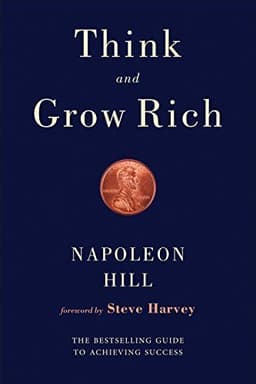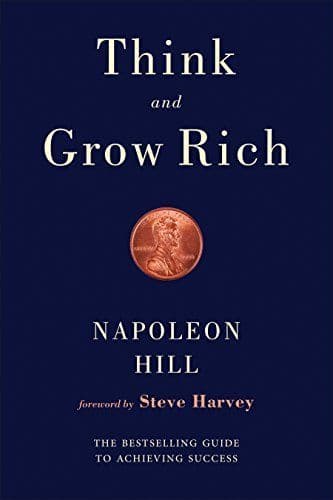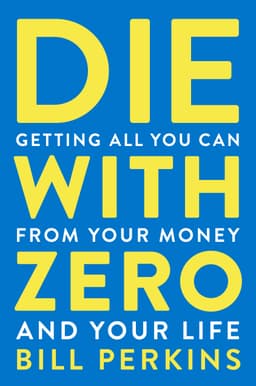
The 5 Types of Wealth Book Summary
A Transformative Guide to Design Your Dream Life
Book by Sahil Bloom
Summary
After three years of research, personal experimentation, and thousands of interviews across the globe, Sahil Bloom has created a groundbreaking blueprint to build your life around five types of wealth: Time Wealth, Social Wealth, Mental Wealth, Physical Wealth, and Financial Wealth.
Sign in to rate
Average Rating: 5
You're Going To See Your Parents Fifteen More Times Before They Die
> You're going to see your parents fifteen more times before they die.
- Friend of Sahil Bloom
Section: 0, Chapter: 0
The Arrival Fallacy
The arrival fallacy is the false assumption that reaching some achievement or goal will create durable feelings of satisfaction and contentment in our lives. We incorrectly assume that we will finally experience the sensation of having arrived when we reach whatever we have propped up as our destination.
Section: 0, Chapter: 0
The Five Types of Wealth
The five types of wealth represent a new scoreboard for measuring a successful life:
1. Time Wealth : The freedom to choose how to spend your time, with whom, where, and when to trade it
2. Social Wealth : Connection to others - the depth of meaningful relationships and breadth of your network
3. Mental Wealth : Connection to purpose and meaning, the pursuit of growth, and space for thinking
4. Physical Wealth : Your health, fitness, and vitality - built through movement, nutrition, and recovery
5. Financial Wealth : Assets minus liabilities, including your expectations of what you need
Section: 0, Chapter: 2
The Life Razor: Your Decision-Making Heuristic
Your Life Razor is a single statement that defines your presence in the current season of life - a powerful decision-making heuristic with three core characteristics:
1. Controllable : It should be within your direct control
2. Ripple-creating : It should have positive second-order effects in other areas of life
3. Identity-defining : It should indicate the type of person you are
Example: "I will coach my son's sports teams" shows commitment to family, creates ripples in relationships, and defines identity as a present parent. When facing decisions, ask: "What would the type of person who coaches his son's sports teams do?"
Section: 0, Chapter: 4
Never Miss A Tuesday Dinner
For over thirty years, Netflix co-founder Marc Randolph maintained a non-negotiable weekly ritual: every Tuesday at 5 PM, he would leave work to spend the evening with his wife. Despite building one of the most transformative companies in history, this commitment was absolute.
"Nothing got in the way of that," Randolph explained. "If you had something to say to me on Tuesday afternoon at 4:55, you had better say it on the way to the parking lot."
This simple ritual wasn't just about dinner - it was about symbolism and signaling priorities. It showed his wife, children, and employees what truly mattered to him. It created positive ripple effects throughout his world, strengthening his marriage, providing security to his children, and encouraging employees to set their own boundaries.
Section: 0, Chapter: 4
Running Faster to Stay in Place
In Lewis Carroll's "Through the Looking-Glass," Alice finds herself running with the Red Queen but making no progress. When she questions this, the Queen explains: "Here, you see, it takes all the running you can do, to keep in the same place. If you want to get somewhere else, you must run at least twice as fast!"
This Red Queen Effect perfectly describes our modern relationship with time. Despite having more time-saving technology than ever, we feel constantly behind. We're victims of attention residue - the cognitive cost of switching between tasks - and scattered focus from endless digital distractions.
The solution isn't to run faster, but to run smarter by identifying high-leverage moments and directing concentrated attention to them.
Section: 1, Chapter: 7
The Three Pillars of Time Wealth
Time Wealth is built on three progressing pillars:
1. Awareness : Understanding the finite, impermanent nature of time. Recognize yourself as a "time billionaire" with billions of seconds remaining, but grasp that this fortune diminishes daily.
2. Attention : The ability to direct your focus to what matters and ignore the rest. Like a magnifying glass concentrates sunlight, concentrated attention creates asymmetric outputs - breaking the fixed 1:1 relationship between inputs and results.
3. Control : The freedom to own your time and choose how to spend it. This is the ultimate goal - becoming a time maker rather than a time taker.
Section: 1, Chapter: 8
The Eisenhower Matrix: Managing Priorities
Use the Eisenhower Matrix to differentiate between urgent and important tasks:
- **Important and urgent**: Do these tasks NOW
- **Important but not urgent**: SCHEDULE time for these compounding activities
- **Not important but urgent**: DELEGATE these tasks
- **Not important and not urgent**: DELETE these time-wasting activities
Your goals with this matrix:
- Manage the important tasks so they rarely become urgent
- Spend most of your time on important, non-urgent tasks
- Minimize time spent in the bottom half of the matrix
Section: 1, Chapter: 9
The Time Wealth Hard Reset
Calculate how many times you'll see your loved ones before the end of their lives through this simple exercise:
- Write down the name of a friend or family member you love deeply but don't see enough
- Approximate how many times per year you see that person
- Subtract the older person's age from 80 (their estimated remaining years)
- Multiply the number of times you see them per year by their remaining years
This terrifyingly simple math creates a powerful awareness that can spark new priorities. When the author realized he would only see his 65-year-old father about 15 more times before he died, it prompted him to move across the country to be closer to family.
Section: 1, Chapter: 9
The Four Types of Professional Time
There are four types of professional time that you should balance:
1. Management Time : Meetings, calls, presentations, email, team management
2. Creation Time : Writing, coding, building, preparing - where new progress is found
3. Consumption Time : Reading, listening, studying - where new ideas are planted
4. Ideation Time : Brainstorming, journaling, walking, self-reflecting - where ideas are cultivated
Most people spend too much time in Management and neglect the others, especially Consumption and Ideation. Track your time for a week to identify imbalances, then work toward batching Management Time to create space for Creation, Consumption, and Ideation.
Section: 1, Chapter: 9
Parkinson's Law: How to Eliminate Time Waste
Parkinson's Law states that work expands to fill the time allotted for its completion. Use this principle to be more efficient:
- Set shorter time blocks for low-importance tasks
- Batch-process email in 1-3 constrained windows each day
- Shorten standard meetings to 25 minutes
- Work on big projects in 1-3 hour focus blocks
- Batch dreaded personal tasks (cleaning, laundry) into short sprints
When you establish long fixed hours, you find unproductive ways to fill them. Instead, work like a lion: sprint, rest, repeat. The artificial pressure of time constraints makes you focus on what's truly important.
Section: 1, Chapter: 9
Sitting In The Front Row
Close your eyes and take three deep breaths. Imagine you're dead. You're at your funeral. People are walking in, crying, hugging each other. Everyone sits down. Who is sitting in the front row? Imagine their faces. These people—your Front-Row People—are the ones who truly matter.
Section: 2, Chapter: 11
Harvard's 85-Year Study on Happiness
In 1938, two research teams began tracking the lives of 724 men from different backgrounds. The Harvard Study of Adult Development continues today, making it the longest-running study on happiness and health ever conducted.
After 85+ years of data, the study's most important finding is stunningly simple: relationships are everything. Strong, healthy relationships are the best predictor of life satisfaction, far outpacing social class, wealth, fame, IQ, and genetics.
Even more remarkably, relationship satisfaction at age 50 was the single greatest predictor of physical health at age 80. Conversely, loneliness was found to be worse for health than regular tobacco or alcohol use.
As the study's director Robert Waldinger concluded: "Taking care of your body is important, but tending to your relationships is a form of self-care too."
Section: 2, Chapter: 12
The Magic Years
For ten years, you are your child's favorite person in the entire world. After that, children have other favorite people - friends, romantic partners, and eventually their own children. During those precious ten years, you occupy a unique place in their world, building the foundation for your relationship.
Unfortunately, these special years often coincide with parents' peak working hours and professional responsibilities. The days are long, but the years are short. By the time your children are eighteen, you've already used up the vast majority of the time you'll have with them.
The goal isn't to sacrifice your career or potential, but to understand these ten years are different. Have clarity to choose and design your balance rather than accepting the default path.
Section: 2, Chapter: 13
The Three Pillars of Social Wealth
Social Wealth is built across three core pillars:
1. Depth : Connection to a small circle with deep, meaningful bonds - your "Front-Row People." Built through honesty (sharing inner truth), support (sitting in darkness during struggles), and shared experiences.
2. Breadth : Connection to a larger circle for support and belonging beyond yourself - through community, faith, or broader networks.
3. Earned Status : The lasting respect and admiration from peers based on what you've earned, not what you've bought. This comes through hard-won treasures like freedom of time, loving relationships, purpose-driven work, and wisdom.
Section: 2, Chapter: 14
Bought Status vs. Earned Status
There are two types of status that influence your social positioning:
Bought Status: Improved social positioning through acquired symbols
- Club memberships that make you "part of the scene"
- Expensive possessions purchased to show financial wealth
- Experiences taken more for social media posts than enjoyment
Earned Status: Respect and admiration through hard-won treasures
- Freedom to choose how to spend your time
- Loving relationships built through years of presence
- Purpose-driven work and mastery in your domain
- Wisdom gained through years of experience
- Physical vitality maintained through discipline
Bought status is fleeting; earned status is lasting. Focus on what must be earned, not what can be bought.
Section: 2, Chapter: 14
Two Rules for Growing in Love
To grow in love with your partner, follow these two rules:
- **Understand Love Languages**: Learn your partner's primary way of experiencing love - Words of Affirmation, Quality Time, Gifts, Acts of Service, or Physical Touch. Show up in the way that's most effective for them.
- **Avoid the Four Relationship Traps**: Psychologist John Gottman identified four communication patterns that predict relationship failure with 94% accuracy:
- Criticism (personal attacks instead of specific complaints)
- Defensiveness (making excuses instead of taking accountability)
- Contempt (treating partner with disrespect - the #1 predictor of divorce)
- Stonewalling (shutting down completely)
Section: 2, Chapter: 15
The Relationship Map
To assess your current relationships, create a relationship map by following these steps:
List your core relationships (usually 10-15)
For each relationship, assess:
- Is it supportive, ambivalent, or demeaning?
Is the interaction frequent or infrequent?
Plot them on a 2×2 grid with Relationship Health on the x-axis and Frequency on the y-axis
Review the four zones: Green Zone (supportive and frequent), Opportunity Zone (supportive but infrequent), Danger Zone (ambivalent and frequent), and Red Zone (demeaning and frequent)
This visual map helps you prioritize healthy relationships and manage or remove toxic ones.
Section: 2, Chapter: 15
The Three Pillars of Mental Wealth
Mental Wealth is built on three core pillars:
1. Purpose : The clarity of defining your unique vision that creates meaning and aligns decisions. Your purpose doesn't have to be grand or impressive - "One's own dharma performed imperfectly is better than another's dharma well performed."
2. Growth : The hunger to progress and change, driven by understanding the dynamic potential of your intelligence and character - adopting a growth mindset rather than a fixed one.
3. Space : Creating stillness and solitude to think, reset, and recharge. This could be walks, meditation, journaling, or any activity that gives you mental space between stimulus and response.
Section: 3, Chapter: 19
The Fixed Mindset vs. The Growth Mindset
Based on Dr. Carol Dweck's research, there are two fundamental mindsets that shape how we approach life:
Fixed Mindset: Believes abilities, intelligence and character are static
- Hungers for external affirmation and approval
- Deeply fears failure and rejection
- Believes if things aren't good now, they never will be
Growth Mindset: Believes abilities, intelligence and character are dynamic
- Focuses on intrinsic motivation and process
- Embraces failure as learning
- Believes starting circumstances don't determine outcomes
Those with a growth mindset are prepared to face life's challenges with resilience and optimism. They ground their identity in efforts toward improvement rather than outcomes.
Section: 3, Chapter: 19
The 1-1-1 Journaling Method
Even five minutes of daily journaling can profoundly impact your mental health. The 1-1-1 method is a simple approach anyone can maintain:
Every evening, write down three things:
1. One win from the day
2. One point of tension, anxiety, or stress
3. One point of gratitude
This method works because:
- Noting a win allows you to appreciate progress
- Acknowledging tension gets it off your mind and onto paper
- Expressing gratitude helps you reflect on what's most important
To build accountability, create a group chat with others trying to establish a journaling habit and text "Done" when you complete your entry.
Section: 3, Chapter: 20
How to Learn Anything: The Feynman Technique
Use the four steps of the Feynman Technique to develop deep understanding of any topic:
1. Set the Stage : Write the topic at the top of a page and research it broadly
2. Teach : Explain the topic to someone without prior knowledge, or write it as if explaining to a child, using simple language
3. Assess and Study : Identify where you got stuck or relied on jargon - these are the gaps in your understanding. Go back and study these areas more
4. Organize and Review : Refine your explanation into a clear, compelling story
This technique works because complexity and jargon often mask a lack of deep understanding. As Richard Feynman observed, "If you can't explain something simply, you don't understand it well enough."
Section: 3, Chapter: 20
The Pursuit Map: Follow Your Energy
Rather than following your interests or passions, follow your energy - the truly scarce resource. Create a Pursuit Map: a 2×2 matrix with competency level (low to high) on the x-axis and energy (draining to creating) on the y-axis.
Plot your current and potential pursuits on this grid to identify:
- Zone of Genius: High competency + energy-creating activities
- Zone of Hobby: Low competency + energy-creating activities
- Zone of Danger: High competency + energy-draining activities
The goal: Spend most time in your Zone of Genius, some time in your Zone of Hobby, and minimize time in your Zone of Danger.
Section: 3, Chapter: 20
Dan Go's Physical Transformation
In his mid-twenties, Dan Go was heading down a destructive path. Bullied as a child and told he'd never amount to anything, he dropped out of high school and developed harmful habits. His self-worth eroded as his physical appearance changed, creating a vicious cycle.
Everything changed when his father gave him a one-month gym pass. On the first day, he struggled on the treadmill. By day seven, he started feeling comfortable. On day thirty, he noticed his belt needed to be tightened one notch.
That small change represented something profound: Dan had reclaimed control of his life. As he continued focusing on fitness, everything changed - his mind functioned better, his self-talk improved, and he developed a belief that anything was possible.
Section: 4, Chapter: 22
The Three Pillars of Physical Wealth
Physical Wealth is built on three controllable pillars that exist on a spectrum from beginner (Level 1) to advanced (Level 3):
1. Movement : Daily body movement through cardiovascular exercise, resistance training, and activities promoting stability and flexibility.
2. Nutrition : Consumption of primarily whole, unprocessed foods to meet major nutrient needs, with proper attention to protein intake and supplementation as necessary.
3. Recovery : High-quality, consistent sleep performance and other recovery-promoting activities like breathing exercises, meditation, or temperature therapies.
Section: 4, Chapter: 24
The Common-Sense Diet
Follow these eight simple nutrition principles:
- Eat whole, unprocessed foods 80-90% of the time
- Stop eating before you're completely full (80% satiety)
- Get enough protein (about 0.8g per pound of body weight for active people)
- Avoid foods that make YOU feel and perform poorly
- Drink plenty of water and limit alcohol
- Include vegetables or fruits at every meal
- Find a meal frequency that works for YOUR life
- Don't take your diet so seriously that you miss out on life experiences
Focus on high-quality protein sources (meat, fish, eggs, yogurt), nutrient-dense carbohydrates (whole grains, potatoes, fruits, vegetables), and healthy fats (nuts, olive oil, avocados).
Section: 4, Chapter: 25
Nine Rules for Sleep
Follow these nine science-backed rules to become a professional sleeper:
- Keep a regular sleep schedule (even on weekends)
- View morning sunlight for 10-15 minutes daily
- Make your sleep environment cool and dark
- Avoid eating right before bed
- Limit liquids 60 minutes before bedtime
- Avoid caffeine within 8 hours of sleep
- Cut back on alcohol
- Create a wind-down routine
- Avoid screens before bed
If you follow these rules with 90% consistency for 30 days, you'll dramatically improve your sleep quality and feel the benefits throughout your life.
Section: 4, Chapter: 25
The Knowledge That I've Got Enough
In a short poem about his late friend Joseph Heller, author of Catch-22, Kurt Vonnegut shared a profound anecdote. At a billionaire's party, Vonnegut asked Heller how it felt knowing their host made more money in a day than Catch-22 had earned in its entire history. Heller replied, "I've got something he can never have...the knowledge that I've got enough."
This idea of "enough" is what we often lack in our endless pursuit of more. Without defining enough, we're gripped by a constant, obsessive quest that never satisfies. As John D. Rockefeller once replied when asked how much money was enough: "Just a little bit more." This quest for more is the modern-day Sisyphean struggle - we push the boulder up the hill only to have it roll back down, forcing us to begin anew.
Section: 5, Chapter: 27
The Fisherman And The Banker
A wealthy investment banker meets a fisherman in a tropical village. Noticing the fisherman's small catch for the day, the banker asks why he doesn't fish longer. The fisherman explains he has all he needs: "Each day, I sleep late, fish a little, spend time with my family. In the evening, I drink wine, play guitar, and laugh with friends."
The banker proposes a plan: fish more, buy a bigger boat, build a fleet, move to the city, and take the company public. "Then what?" asks the fisherman. The banker replies, "Then you could retire to a quiet town! Sleep late, fish a little, spend time with family, and in the evening, drink wine and laugh with friends."
This parable isn't about right or wrong choices, but about defining what success means to you and building a life that meets that definition.
Section: 5, Chapter: 27
The Five Levels of Financial Wealth
There are five distinct levels on the Financial Wealth journey:
1. Level 1 : Baseline needs are met - food and shelter
2. Level 2 : Baseline needs exceeded with modest pleasures accessible (restaurant meals, simple vacations)
3. Level 3 : Baseline needs no longer top of mind, focus shifts to saving and investing, more significant pleasures available
4. Level 4 : Most reasonable pleasures readily available, assets generate passive income covering some expenses (moderate financial independence)
5. Level 5 : All pleasures available, assets generate passive income exceeding all expenses (complete financial independence)
Each level has its own stresses - money solves money problems but creates new challenges related to identity and purpose.
Section: 5, Chapter: 29
The Three Pillars of Financial Wealth
Financial Wealth is built on three pillars:
1. Income Generation : Create stable, growing income through primary employment, secondary employment, and passive streams. This involves building marketable skills and leveraging them effectively.
2. Expense Management : Keep expenses reliably below your income level and growing at a slower rate. Create budgets, automate savings, and most importantly, manage your expectations - never allow them to grow faster than your assets.
3. Long-Term Investment : Invest the difference between income and expenses in assets that compound effectively. Remember Warren Buffett's lesson: time, not average returns, is the most important factor in compounding.
Section: 5, Chapter: 29
Define Your Enough Life
To avoid falling victim to constantly rising expectations, define your "Enough Life" - the life where you have just the right amount of financial wealth. Use these prompts:
- Where do you live? What specific characteristics do you love about this place?
- Whom do you live with? Are you close to family or far away?
- What are you doing on an average Tuesday? What are you spending time on?
- What material things do you have that truly bring joy?
- What does your financial profile look like? What amount of money enables that life?
Write your responses, and if you have a partner, conduct this exercise individually then compare answers.
Section: 5, Chapter: 30
Related Content


Think and Grow Rich Book Summary
Napoleon Hill
"Think and Grow Rich" is a transformative guide that reveals how harnessing the power of thought, desire, and persistence can turn your dreams into reality, offering practical strategies to overcome mental barriers and achieve lasting success and wealth.
"Think and Grow Rich" is a transformative guide that reveals how harnessing the power of thought, desire, and persistence can turn your dreams into reality, offering practical strategies to overcome mental barriers and achieve lasting success and wealth.
Personal Development
Money


Die With Zero Book Summary
Bill Perkins
Die with Zero is an unconventional guide that challenges traditional notions of saving and spending, urging readers to maximize their life experiences by investing in memories and relationships while they still have the time and health to fully enjoy them.
Die with Zero is an unconventional guide that challenges traditional notions of saving and spending, urging readers to maximize their life experiences by investing in memories and relationships while they still have the time and health to fully enjoy them.
Life
Meaning
Money

